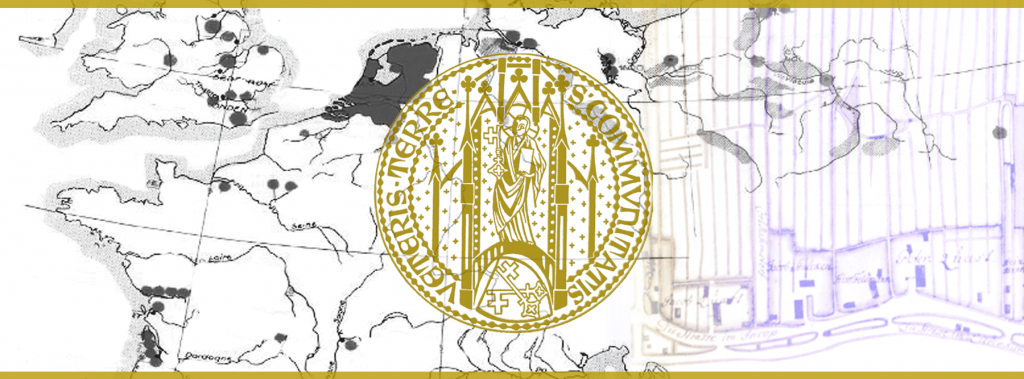A EUROPEAN SETTLEMENT PROCESS
Traces of the Dutch
Traces of the Dutch can be found in the marshlands of the Weser and Elbe. Documents contain content about Dutch Hufen, Dutch law or monologues directly from the Dutch.
Indirectly, expressions like wateringe, sitwendinge or vimmen draw attention to the origin of the colonists. This also applies to the Saxons, who were originally foreign to the court system with mayors (Schulzen) and lay judges (Schoeffen).
There is also evidence that in many marshes, Dutch inheritance and marital property law took effect because the Dutch colonists had separate legal districts conceded within the Saxon land rights.
Even place names have Dutch origins – this is especially the case with names with -kop, but it also applies to names with -brok and -land. It is also typical to have colonised areas be named after rivers. The well-planned field division of the colonies, which were measured lengthwise and widthwise to form Hufen, also come from the Dutch. This is how the colonies in the marshes maintained their characteristic settlement structure as marsh yardland villages (Marschhufendörfer).
Motherlandscapes ans Sisterlandscapes – Examples of Hollercolonization
The Origin
There can be no doubt that the Dutch, who settled on the Weser and Elbe in the 12th century, brought this type of settlement with them from Holland. Hendrik van der Linden was able to identify the villages of Leimuiden, Esselijkerwoude and Rijnsaterwoude near Leiden, which were mentioned as early as the 11th century, as the region of origin. These areas of origin are only moderately preserved today.
North of Bremen on the Weser and the Elbe
North of Bremen on the Wümmeniederung was the starting point for the elder colonization on the Weser in the 12th century. On the Elbe follow the Bishorstermarsch, Haseldorfermarsch and Wilstermarsch, the Vier- and Marschlande since 1142, the Land Hadeln and Kehdingen.
Lopik
Lopik is part of the Lopikerwaard region in the south-western province of Utrecht and is a polder landscape. The exact time of the first embankment has not been proven, but it is estimated to be in the first half of the 12th century.
Beemster Polder
North of Amsterdam, the Beemster Polder is a manmade irrigation and drainage landscape which has been reclaimed by nature. In 1607, the Dutch court ordered that the area be drained; this began in 1612. The Beemster Polder has been a UNESCO World Heritage Site since 1999.
In 1648 a group of Dutch settlement entrepreneurs visited the Brandenburg authorities in Tangermünde, Fehrbellin, Spandau, Bötzow (Oranienburg), Liebenwalde and Zehdenick. One of them came from the Beemster, he was a surveyor and made a map of the area. The way in which he parceled out the land between Aland and Elbe does not differ from the division of land in the Beemster.
England
In East England there were Dutch engineers who drained the moors and made them arable.
Poland
In 1568, the Dutch newcomers were already settled in Poland by the Starost Jan Dulski. They were sent from Rogoźno to Nizina Sartawicko – Nowska: “He gives 50 Hufen to Tomasz and Piotr Jansen, Leonard von Pho, Bernard von Bayer and Andrzej Unruh, along with their tenants and relatives”.
The other settlements arise in the area of Chełm and Świecie (Schwetz) from 1600 to 1650, Toruń (Thorn) and Włocławek (Wloclawek) (beginning of the 17th century). The colonists come to Warsaw, where they settle in Saska Kępa in 1628.
Colonisation in Poland was especially spurred on by Mennonites. Most Dutch settlements there date from the 17th and 18th centuries. The village of Trigenhof (Tujce) was held for the first Mennonite settlement; it was established by Faber, the mayor of Gdansk.
In the villages of Weichseltal, Frisian and Flemish was spoken until around 1800; in some areas, it was even spoken until the end of the 19th century. A permanent connection was maintained with Holland, as even in the 18th century, one would go there to learn. Furthermore, priests were exchanged between churches and mutual support was offered during the Swedish wars.
